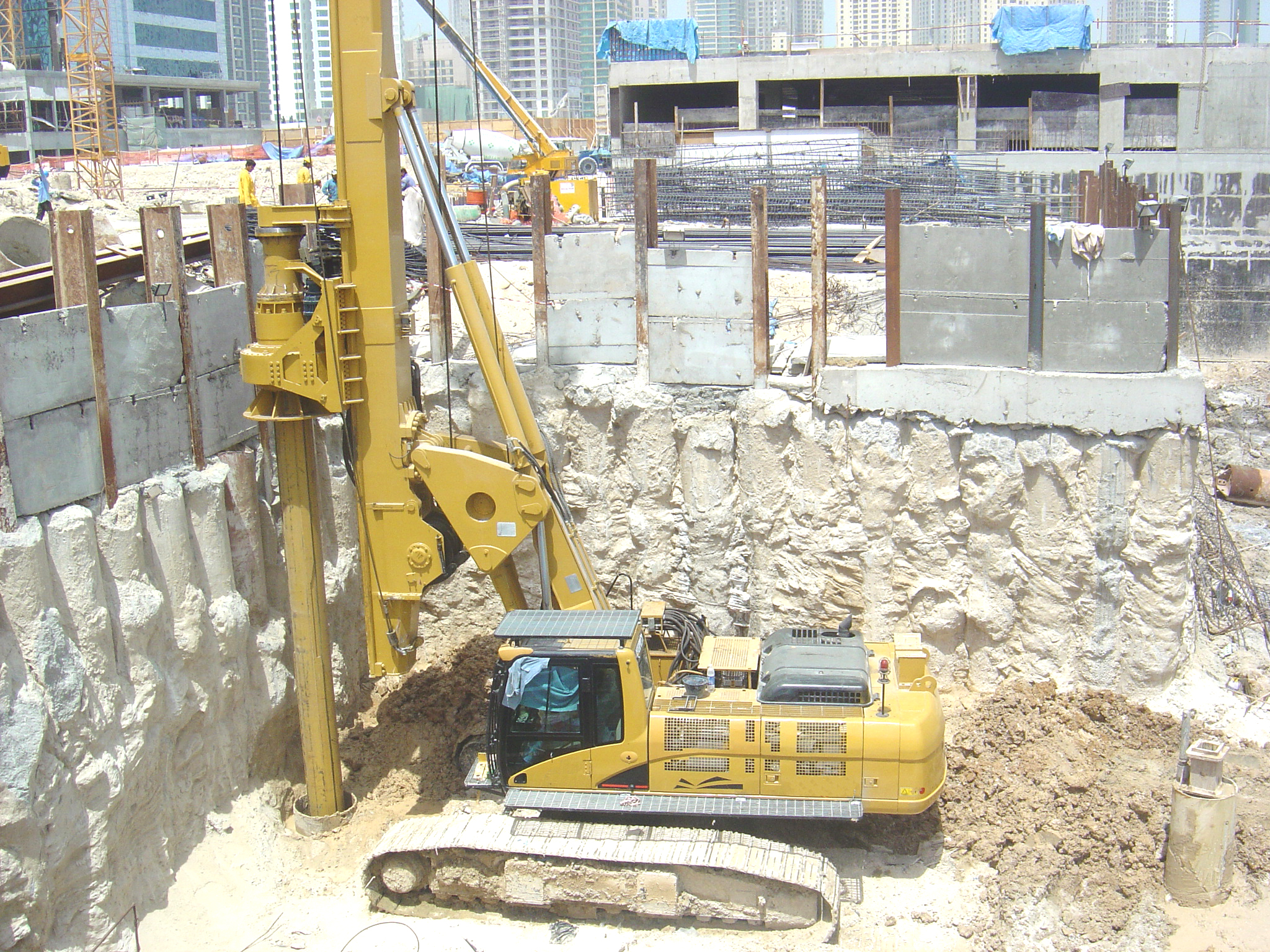1. Project overview
The project adopts open-cut construction. If the depth of foundation pit is greater than 3 meters and less than 5 meters, the supporting structure is supported by φ0.7m*0.5m cement soil mixing pile gravity retaining wall. When the depth of foundation pit is greater than 5 meters and less than 11 meters, φ1.0m*1.2m bored pile + single row φ0.7m*0.5m cement soil mixing pile support is used. The foundation pit depth is greater than 11 meters, using φ1.2m*1.4m bored pile + single row φ0.7m*0.5m cement soil mixing pile support.
2. The importance of verticality control
The verticality control of piles is of great significance to the subsequent construction of foundation pit. If the verticality deviation of bored piles around the foundation pit is large, it will lead to the uneven stress of the retaining structure around the foundation pit, and bring great hidden dangers to the safety of foundation pit. At the same time, if the verticality deviation of the bored pile is large, it will have a great influence on the construction and use of the main structure in the later period. Due to the large verticality deviation of the bored pile around the main structure, the force around the main structure will be uneven, which will lead to cracks in the main structure, and bring hidden dangers to the subsequent use of the main structure.
3. The reason for the deviation of perpendicularity
The vertical deviation of test pile is large. Through the analysis of the actual project, the following reasons are summarized from mechanical selection to the final hole formation:
3.1. The selection of drill bits, the geological hardness of the rotary pile digging machine in the drilling process is not uniform, the selection of drill bits can not meet the needs of different geological conditions, resulting in the bit deviation, and then the vertical deviation of the pile does not meet the requirements of the specification.
3.2. The protection cylinder is buried out of position.
3.3. Drill pipe displacement occurs during drilling.
3.4. The positioning of the steel cage is out of position, due to the improper setting of the pad to control the steel cage, the deviation caused by the failure to check the center after the steel cage is in place, the deviation caused by too fast concrete perfusion or the deviation caused by the pipe hanging the steel cage.
4. Verticality deviation control measures
4.1. Selection of drill bit
Select drill bits according to formation conditions:
①clay: choose a single bottom of the rotary drilling bucket, if the diameter is small can use two buckets or with unloading plate drilling bucket.
②Silt, not strong cohesive soil layer, sandy soil, poorly consolidated pebble layer with small particle size: choose a double-bottom drilling bucket.
③hard clay: choose a single inlet (single and double bottom can be) rotary digging drill bucket, or bucket teeth straight screw.
④cemented gravel and strongly weathered rocks: need to be equipped with a conical spiral drill bit and a double-bottom rotary drilling bucket (with a single diameter of the larger particle size, with a double diameter)
⑤stroke bedrock: equipped with a cylindrical core drill bit – conical spiral drill – double-bottom rotary drilling bucket, or a straight spiral drill bit – double-bottom rotary drilling bucket.
⑥breezed bedrock: equipped with cone cone core drill bit – conical spiral drill bit – double-bottom rotary drilling bucket if the diameter is too large to take the stage drilling process.
4.2. Casing buried
In order to maintain the verticality of the protective cylinder when burying the protective cylinder, the intersection control should be carried out by different distance from the leading pile to the pile center until the top of the protective cylinder reaches the specified elevation. After the casing is buried, the center position of the pile is restored with this distance and the previously determined direction, and it is detected whether the center of the casing coincides with the center of the pile, and is controlled within the range of ±5cm. At the same time, the surrounding of the casing is tamped to ensure that it is stable and will not be offset or collapse during drilling.
4.3. Drilling process
The drilled pile should be drilled slowly after opening the hole, in order to form a good and stable wall protection and ensure the correct hole position. During the drilling process, the position of the drill pipe is checked regularly with the distance intersection, and the deviation is adjusted immediately until the hole position is set.
4.4. Positioning of steel cage
Pile verticality deviation detection is determined by the deviation between the center of the steel cage and the center of the designed pile, so the positioning of the steel cage is an important item in the control of pile position deviation.
(1) Two hanging bars are used when the steel cage is placed under to ensure the perpendicularity of the steel cage after lifting.
(2) According to the requirements of the code, the protection pad should be added, especially in the pile top position should be added some protection pad.
(3) After the steel cage is placed in the hole, pull the cross line to determine the center point, and then carry out the distance between the center of the intersection and the recovery of the pile by drawing the pile and the set direction. Compare the hanging vertical line with the center of the steel cage, and adjust the steel cage by slightly moving the crane to ensure that the two centers coincide, and then weld the positioning bar to make the positioning bar reach the wall of the protective cylinder.
(4) When the poured concrete is close to the steel cage, slow down the concrete pouring speed and keep the catheter position in the center of the hole.
Post time: Sep-22-2023

